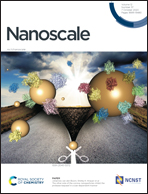CoP QD anchored carbon skeleton modified CdS nanorods as a co-catalyst for photocatalytic hydrogen production†
Abstract
An important strategy to improve the performance of catalysts is loading nanoparticle co-catalysts of better dispersion and conductivity. In this work, the ZIF-67-derived CoP quantum dot (QD) anchored graphitized carbon skeleton as a co-catalyst is loaded on CdS nanorods (NRs), while the CoP QDs derived from ZIF-67 are anchored to the carbon skeleton under phosphation and carbonization simultaneously. The porous, graphitized carbon skeleton can not only disperse CoP QDs, increasing active sites for the hydrogen reduction reaction, but also provide electron transfer channels, promoting electron transfer and increasing conductivity. In addition, the metallicity of CoP QDs makes it possible to form Schottky junctions, which is beneficial to the electron transfer at the interface. The results show that the composite photocatalyst can extensively improve the photocatalytic activity and stability, the H2 production rate is 104 947 μmol h−1 g−1 under visible light irradiation (λ ≥ 400 nm), up to 55.2 times that of bare CdS NRs, the apparent quantum yield (AQY) reaches a high value of 32.16% at 420 nm, and the structure of the photocatalyst did not change after the reaction. This work provides an innovative method for the preparation of highly efficient noble metal-free photocatalysts for the conversion of solar energy into hydrogen energy, which has bright prospects in industrial application.



 Please wait while we load your content...
Please wait while we load your content...